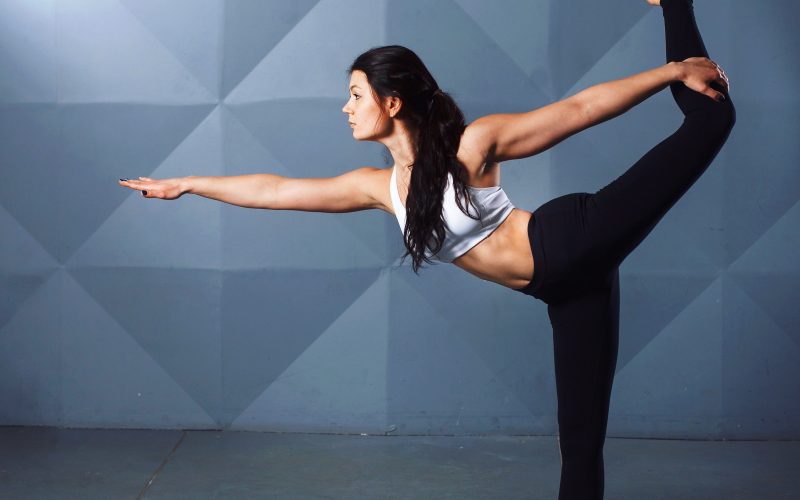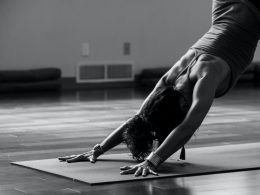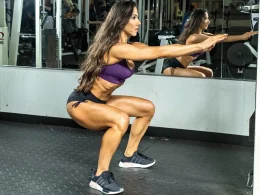Introduction:
Yoga is a centuries-old practice that not only cultivates physical strength and mental well-being but also enhances flexibility and mobility. Whether you’re a beginner or an experienced yogi, incorporating specific poses and practices into your yoga routine can significantly improve your flexibility. In this article, we explore the benefits of yoga for flexibility and highlight key poses and practices that can help enhance your mobility.
Breaking News: Harnessing the Power of Yoga for Flexibility
In recent years, the popularity of yoga has skyrocketed, and its benefits for flexibility have gained widespread recognition. Yoga provides a holistic approach to improving flexibility by combining stretching, strength-building, and mindful movement. As more individuals recognize the importance of flexibility in overall fitness, they are turning to yoga as a means to achieve greater mobility.
Feature Story: Unlocking the Power of Yoga Poses for Flexibility
Yoga offers a myriad of poses that target different muscle groups and enhance flexibility. Here are some key poses known for their ability to improve mobility:
1. Downward-Facing Dog (Adho Mukha Svanasana): This foundational pose targets the hamstrings, calves, and shoulders, stretching and strengthening these areas. Downward-Facing Dog also helps lengthen the spine and improve overall body alignment.
2. Forward Fold (Uttanasana): Uttanasana provides a deep stretch for the hamstrings, calves, and lower back. It promotes flexibility in the posterior chain and helps release tension in the upper body.
3. Triangle Pose (Trikonasana): Trikonasana is a standing pose that stretches and strengthens the legs, hips, and spine. It improves lower-body flexibility and enhances balance and stability.
4. Pigeon Pose (Eka Pada Rajakapotasana): Pigeon Pose targets the hip flexors, glutes, and outer hips. It helps release tension in these areas and increases mobility in the hip joint.
5. Bridge Pose (Setu Bandha Sarvangasana): Bridge Pose stretches the chest, shoulders, and spine while also strengthening the legs and glutes. It opens up the front body and improves spinal flexibility.
Opinion Piece: The Mind-Body Connection in Yoga for Flexibility
Yoga is not only about physical flexibility but also about cultivating a mind-body connection. The mindfulness and breath awareness inherent in yoga practice contribute to greater body awareness, facilitating deeper and safer stretches. By incorporating a focused and present mindset during yoga, practitioners can enhance their flexibility and experience the full benefits of each pose.
Guide to Practicing Yoga for Flexibility:
1. Warm-Up: Prior to practicing yoga, engage in a gentle warm-up routine to prepare your body for stretching. This can include joint mobilization exercises, gentle twists, or a few rounds of Sun Salutations to warm up the entire body.
2. Focus on Breath: Throughout your yoga practice, pay attention to your breath. Deep, steady breathing helps relax the body and allows for deeper stretches.
3. Slow and Mindful Approach: Move through each pose slowly and mindfully, focusing on proper alignment and sensation. Avoid forcing yourself into poses and honor your body’s limits.
4. Incorporate Props: Props such as blocks, straps, or bolsters can assist you in achieving proper alignment and provide support during stretches. They can be particularly helpful for beginners as they work on improving flexibility.
Research Techniques: Verifying Information and Uncovering Sources
To provide accurate and reliable information on yoga for flexibility, employing research techniques is crucial. Here are some strategies:
1. Expert Guidance: Consult certified yoga instructors or experienced practitioners to gather
insights and advice on yoga poses and practices for flexibility. Their expertise can validate the effectiveness and safety of different techniques.
2. Yoga Literature: Refer to reputable yoga books and publications written by renowned yoga teachers or scholars. These sources often provide in-depth explanations of poses, modifications, and the benefits of yoga for flexibility.
3. Personal Experience: Draw upon personal experiences and anecdotes to provide practical insights and relatable perspectives on the impact of yoga on flexibility. Sharing stories of individual transformations can inspire and motivate readers.
Adhering to Journalistic Ethics: Informative and Engaging Reporting
As a journalist, adhering to journalistic ethics is paramount. Here are key principles to follow:
1. Accuracy: Verify information from credible sources and provide proper attribution for factual claims.
2. Clarity: Use clear and concise language to ensure that readers can understand and follow instructions for each yoga pose. Provide step-by-step guidance and emphasize proper alignment.
3. Balance: Present a balanced perspective by discussing the benefits, variations, and limitations of different yoga poses for flexibility. Highlight safety considerations and remind readers to listen to their bodies.
4. Engaging Style: Employ a conversational and engaging writing style that sparks readers’ interest and motivates them to explore yoga for flexibility.
Conclusion
Yoga offers a powerful and accessible approach to enhancing flexibility and mobility. By incorporating specific poses and practices into your yoga routine, you can experience improved range of motion, reduced muscle tension, and increased body awareness. Through diligent research, adherence to journalistic ethics, and accurate reporting, we hope to inspire readers to embrace yoga for flexibility and unlock the countless physical and mental benefits it offers.












